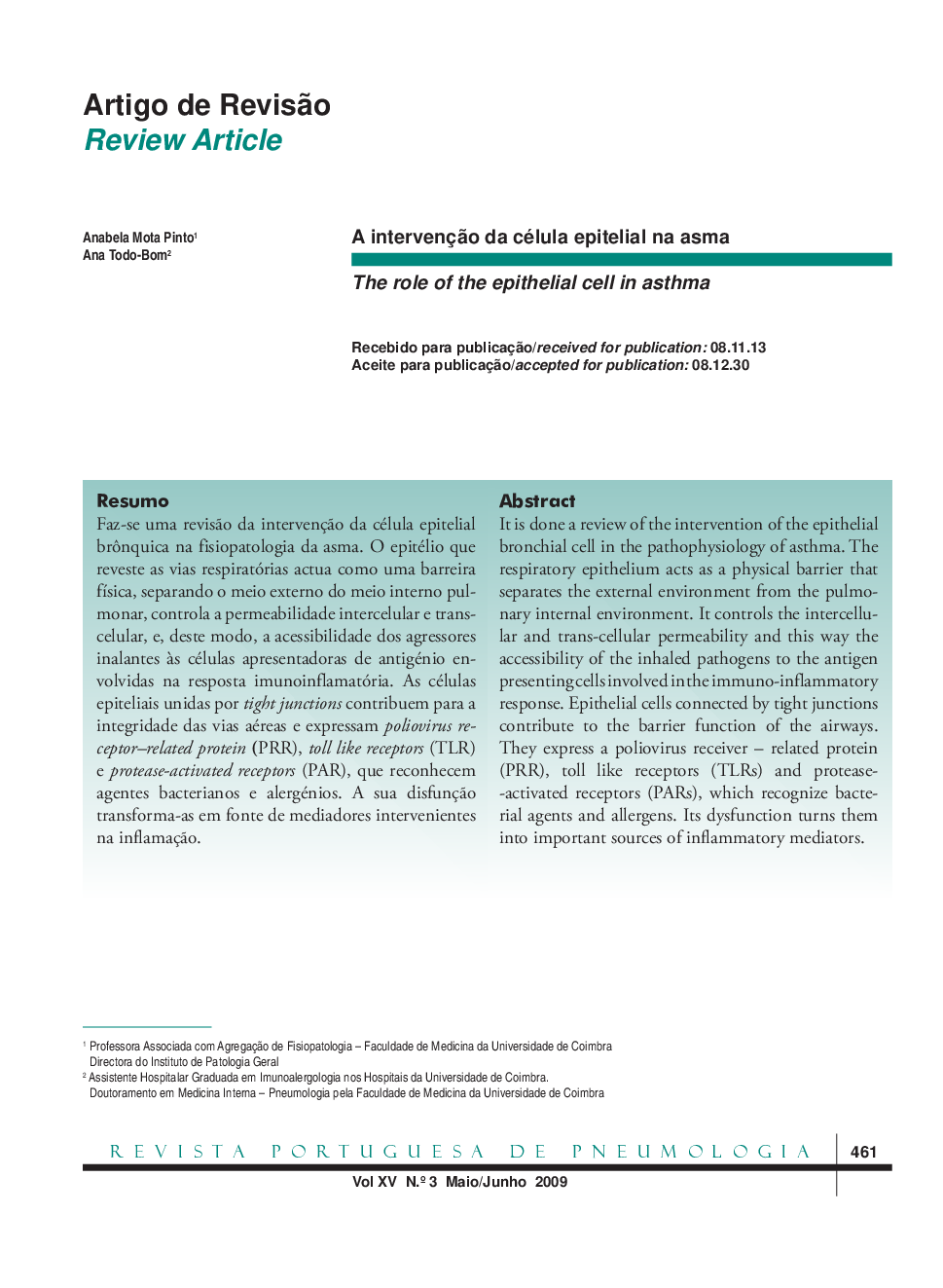| Article ID | Journal | Published Year | Pages | File Type |
|---|---|---|---|---|
| 4214126 | Revista Portuguesa de Pneumologia | 2009 | 12 Pages |
ResumoFaz-se uma revisão da intervenção da célula epitelial brônquica na fisiopatologia da asma. O epitélio que reveste as vias respiratórias actua como uma barreira física, separando o meio externo do meio interno pul-monar, controla a permeabilidade intercelular e transcelular, e, deste modo, a acessibilidade dos agressores inalantes às células apresentadoras de antigénio en-volvidas na resposta imunoinflamatória. As células epiteliais unidas por tight junctions contribuem para a integridade das vias aéreas e expressam poliovirus re-ceptor–related protein (PRR), toll like receptors (TLR) e protease-activated receptors (PAR), que reconhecem agentes bacterianos e alergénios. A sua disfunção transforma-as em fonte de mediadores intervenientes na inflamação.A interacção bidireccional entre, por um lado, o epitélio e os elementos constitutivos do brônquio e por outro, as partículas inaladas, tem subjacente a forma-ção de uma unidade, com identidade própria desig-nada EMTU – epithelial mesenchymal trophic unit. Esta extensa intervenção coloca a célula epitelial no centro de acção da cronicidade e remodelação do pro-cesso asmático.As doenças infecciosas e o stress ambiental são capazes de induzir alterações a nível da célula epitelial suscep-tíveis de modificar a sua resposta a estimulações futu-ras, nomeadamente a ampliar a resposta a outras agressões infecciosas por acção sinérgica das vias de sinalização.O epitélio brônquico tem assim funções de barreira que lhe permite exercer uma permeabilidade selectiva, a nível intracelular e transcelular, é ainda metabolica-mente activo pelas capacidade de produzir mediadores quimiotácticos e citocinas envolvidos no recrutamento e na activação celular, com repercussão na broncomo-tricidade e na remodelação da parede brônquica.Rev Port Pneumol 2009; XV (3): 461-472
It is done a review of the intervention of the epithelial bronchial cell in the pathophysiology of asthma. The respiratory epithelium acts as a physical barrier that separates the external environment from the pulmonary internal environment. It controls the intercellular and trans-cellular permeability and this way the accessibility of the inhaled pathogens to the antigen presenting cells involved in the immuno-inflammatory response. Epithelial cells connected by tight junctions contribute to the barrier function of the airways. They express a poliovirus receiver – related protein (PRR), toll like receptors (TLRs) and protease-activated receptors (PARs), which recognize bacterial agents and allergens. Its dysfunction turns them into important sources of inflammatory mediators.The bidirectional interaction between the epithelium and other bronchial wall elements with inhaled particles originates a structure with its own identity, the designated EMTU – Epithelial Mesenchymal Trophic Unit.These observations support a central role for the epithelial cell in chronic inflammation and in the remodelling of the asthmatic process.Infectious diseases and environmental stress can acti-vate different cell receptors and signalling pathways that induce changes in the cell surface modifying their response to future stimulations, namely to other infectious aggressions.The bronchial epithelium has barrier functions with selective permeability; it has metabolic activity producing cytokines and chemokines stimulating the cell’s recruitment and activation, increasing the bronchial reactivity and the remodelling of the airways.Rev Port Pneumol 2009; XV (3): 461-472
